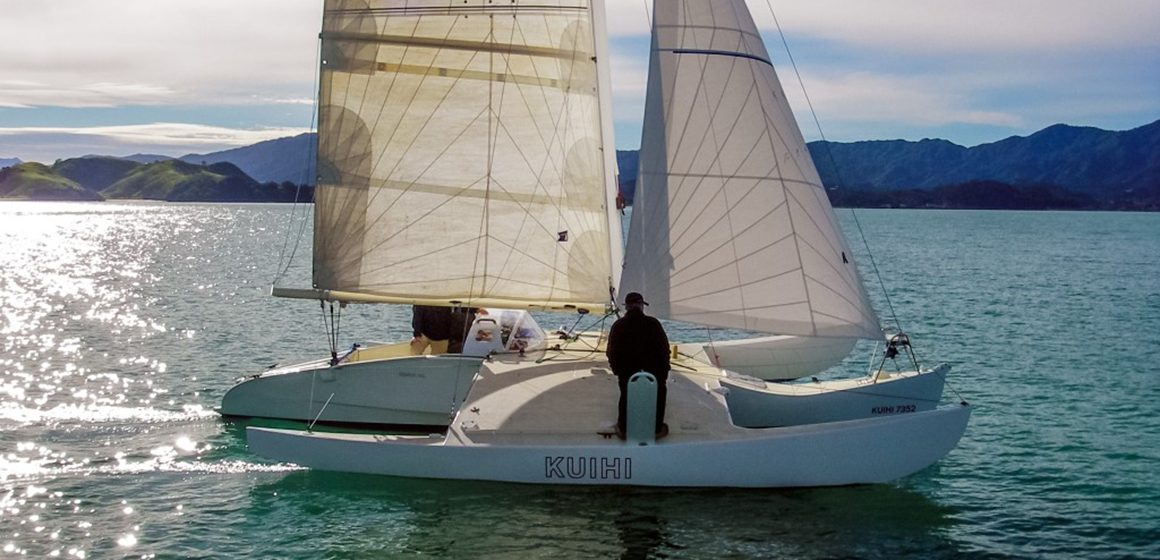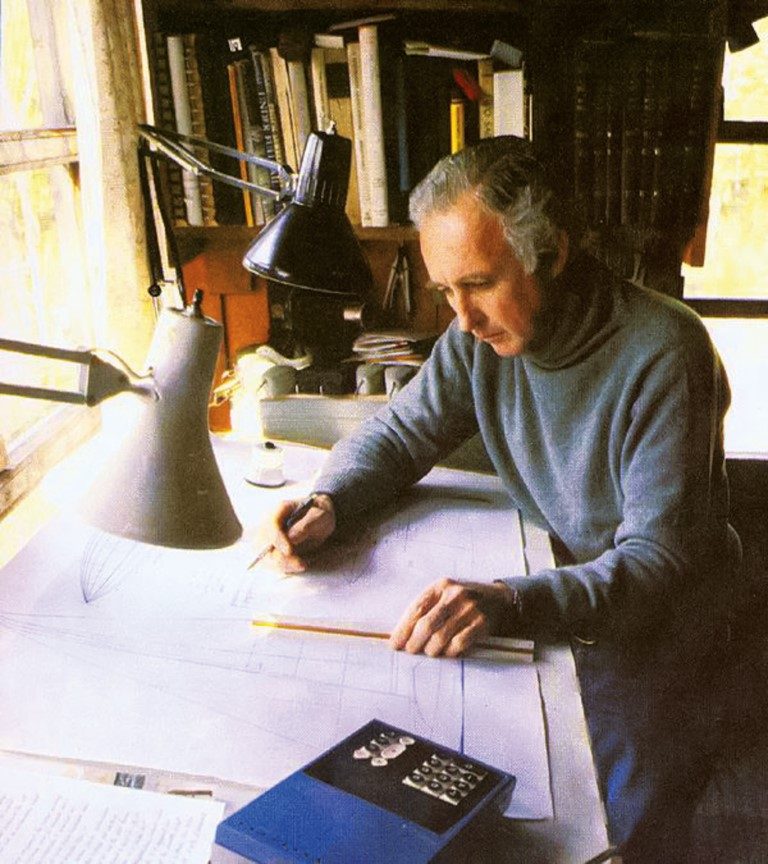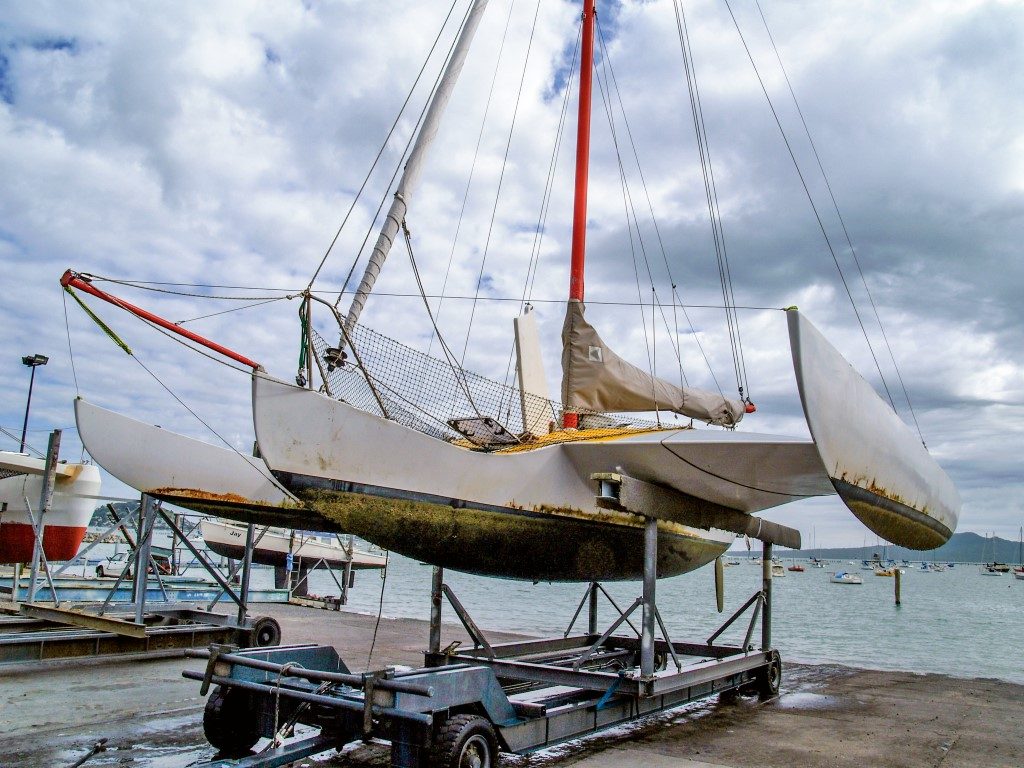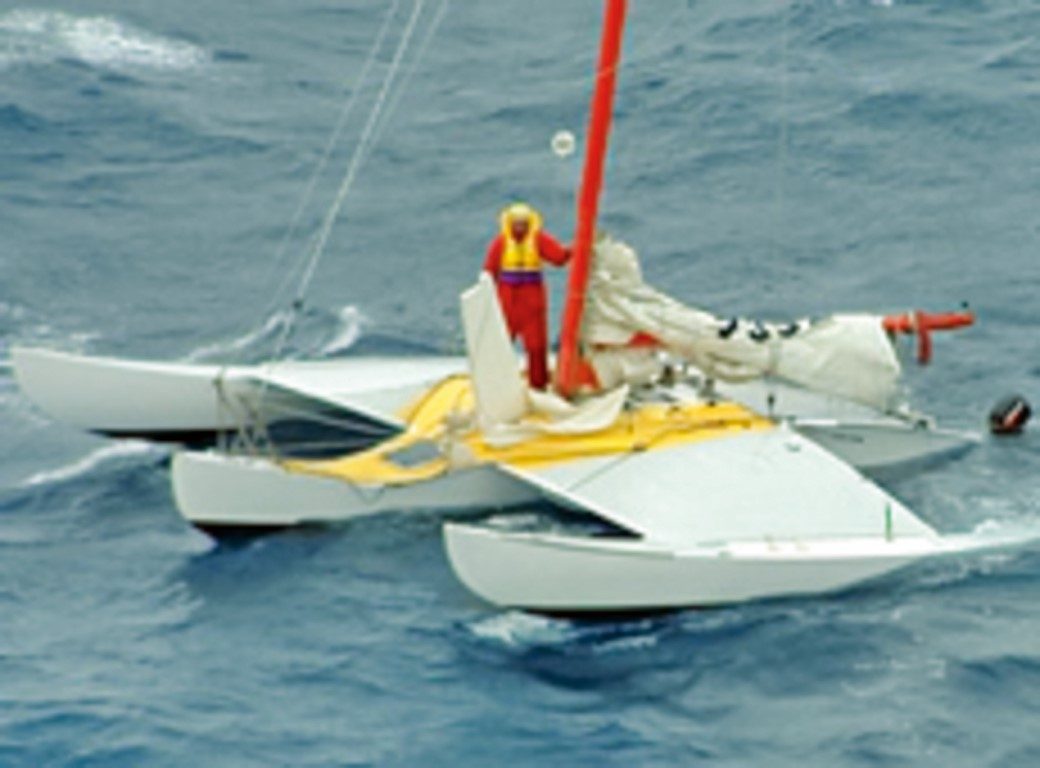

The Newick-designed Val trimaran, Kuihi (goose) has emerged from an offshore whale vs boat mishap in better shape than ever.
Sailors either love Dick Newick’s (1926 – 2013) shapely trimaran designs, or they’re oblivious to them.
With their amas (floats) shaped like a genie’s slippers and wing decks resembling a seabird in flight, Newick’s ground-breaking 1970/80s designs are an acquired taste. But there’s no arguing that they fulfil his ethos of design simplicity, safe seagoing performance, aesthetics and speed under sail.

The young Newick designed and built kayaks in New Jersey, selling the designs to friends and schoolmates. He did a stint in the US Navy and an engineering degree in California before going sailing and kayaking in the US, Europe and the Caribbean.
While running a charter operation in St Croix, he designed and built his first multihull – a 12m day-charter trimaran and the die was set.
“People sail for fun – and nobody has convinced me going slow is more fun than going fast,” he is often quoted as saying.
He was also a believer in reincarnation and thought he may have been a Polynesian boatbuilder in a previous life. Perhaps that’s what lead him to design Cheers, a 12m schooner-rigged proa for the 1968 Observer Singlehanded Transatlantic Race (OSTAR). It was described as the most radical offshore racing yacht ever and, skippered by Tom Follett, Cheers crossed the ocean in 27 days and 13 minutes, beaten only by two much larger monohulls.
Kiwi sailor Wayne Page worked for Newick in Maine, USA, liked what he saw and returned to Christchurch where he built a 9.1m Val design. She was launched in 1982 and named Loose Goose. “Wayne was a real craftsman,” says serial Newick trimaran owner, Thames’ Mark Carter.

“The boat was a piece of beautiful joinery. It’s like living inside a well-built guitar.”
Page became a lifelong friend of Newick – as did Max Purnell, a dairy farmer who met Newick during charter work in the Caribbean. Purnell moved home to Waitakaruru on the Hauraki Plains to build his own boat and became a New Zealand agent for Newick designs.
“That’s why the 11.6m design is called Echo,” explains Mark. “Max gave Dick so much input on changes that would improve the design for New Zealand conditions, that it became an echo from New Zealand. We joke about our boats being half-Newick, half-Waitakaruru.”
Mark began building an 11.6m Echo, Kupapa, as a teenager and launched her in 1992. “It was Dad’s idea – he thought it would keep me out of the pub.” Dad Roger had built a Piver Lodestar trimaran and sailed Satori, a Crowther Kraken, which he and Max Purnell turned turtle in during a two-handed round North Island race.
Kupapa was sold to fund a family home, but in the small world of local Newick enthusiasts Mark kept an eye on her as she progressed through different owners, names and race records. He bought the Newick Val, Loose Goose, which had been holed and abandoned after colliding with a whale 50nm off Port Waikato in 2007. “We consulted Dick and he said it would be OK to cut the cross beams near the hull where they are strongest.”

The three constituent boat parts were loaded on to a truck and driven back across the island to Thames to begin what would become a five-year refit. “I wasn’t that happy with the name,” says Mark, “but I wasn’t comfortable with changing it either.
“I’d seen the odd pair of Canadian geese around the Firth and a pair nested nearby when we began the refit. So I bowled down to the local iwi office and asked about the Maori name for goose. It was kuihi – so we changed the name without changing the name – sort of.”
Having the three separate parts was handy – they could be rolled around, making work easier. The main hull and undersides of the wings were fibreglassed over. Structurally the boat wasn’t too bad – with the exception of a large hole in the main hull where the whale’s tail had slapped it. The tri is built of double-diagonal 8mm kauri plywood, glassed over. Mark says he went a bit over the top with strengthening – “she probably has an extra 20kg of glue and timber in her, but she’s as strong as.”

Then came ‘interlude 1’ as he calls it. He and long-term fiancée, Pauline, were married and boat work took a back seat for a while. Dick Newick flew from the US to have a look, offer advice and catch up with his Kiwi connections.
“He was great,” says Mark. “He’d give his ideas and say ‘now you fix it the way you want’. It was like offering an insight into his way of thinking but letting you do it your way. He put his logo on the rudder which is kind of special. I learned how he kept windage down to improve pointing ability. He was well ahead of his time.”
When she was built Loose Goose typified the minimalist Newick approach with canvas slings for seats. But a cockpit has been added – together with another 500mm to her overall length to accommodate a scoop stern, kick up rudder and outboard motor – a half Newick/half Waitakaruru addition.
Kuihi’s asymmetrical foils were moved 600mm further aft on Newick’s advice – on a Newick the foils are just there to assist – not like an America’s Cup boat that’s foiling all the time.
Next project was a wing mast built out of locally-grown-and-milled pawlonia and carbon fibre. “She’ll cruise along quite comfortably in 40 knots of wind, with just the mast,” says Mark. “We’ve logged up to 19.9 knots, perfectly under control, running off in squalls.”

With the arrival of daughter Maggie, Kuihi’s interior was redesigned for a family of four to cruise in comfort. “Four adults can sit around the table at a time and the kids love their little bunk back under the cockpit,” says Mark. “It does take some discipline to live on board but we’ve had some great family fun on her.”
He recently took eight adults to scatter a deceased friend’s ashes near the Coromandel islands. “It would have been just under a tonne of humanity on board, but you hardly noticed it.”
Completed, Kuihi tipped the scales at 1.8 tonnes. She was trucked from Waitakaruru for relaunching in June 2012. An 8hp four-stroke Yamaha outboard powers the slippery little tri at up to 7–8 knots.

And in a weird twist of fate, the boat Mark built as a teenager, Kupapa (renamed Maku) had come on the market in need of a refit. “I just couldn’t help myself,” he shrugs – and another Newick rebuild got underway. Somewhere Dick Newick is smiling.




